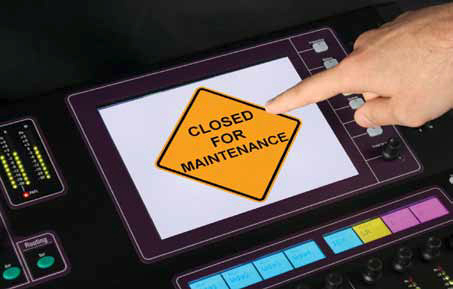Ask most audio folks to list their least favorite things about the business, and right up at the top (just behind dealing with cheap promoters and coiling snakes after a three-day beer fest) is PM.
I’m not talking about the hours between noon and midnight, but rather, preventive maintenance, the regularly scheduled servicing of gear. While most of us check our cables and loudspeakers regularly (right?), we might tend to overlook digital gear, yet it too requires regular PM to make sure it’s ready to deliver top-notch performance at every gig.
In general, PM should be scheduled based on several factors. First, how often does the gear goes out on gigs – the more it’s used, the more frequently it should be serviced.
You can probably get away with a yearly checkup on equipment that doesn’t see much action, but the stuff that’s in heavy rotation should get at least three sessions of PM per year.
Environmental factors that the equipment is exposed to in use and also when in storage is another factor. Climate-controlled venues of course present fewer threats, particularly since smoking isn’t allowed indoors practically anywhere these days, but moving outdoors in general adds a layer of potential problems, and then that goes up by a considerable amount if there’s a lot of dust or you’re located near salt water.
Same with items exposed to cold or heat. Particularly those of you who are presently in the midst of an dusty outdoor festival season, pay heed.
Finally, logic dictates that newer gear can get by with less attention than older gear that’s seen a lot of shows over the years – but don’t push it. A good way for new equipment to age before it’s time is to ignore PM, and that not only jeopardizes performance at shows but overall return on investment.
Similar Process
As noted earlier, just because a console is digital doesn’t mean it’s impervious. So find a clean corner of the shop and gather up some supplies…
The PM process is much like working with an analog console. Begin by giving the surface a good cleaning. Dust and dirt can be removed with a vacuum and a dry cloth. You can also use compressed air in a “duster” can or from a compressor to blow away dust. Make sure if you’re using a compressor that it’s of the oil-free variety so it’s not spraying a light film of oil on the console.
Follow the manufacturer’s recommendations on cleaning the console screens because some chemicals (even mild glass cleaners) may damage the screen surface. Check all ventilation holes and vacuum out the dust. Remove and clean any air filters as per the manufacturer’s instructions.















